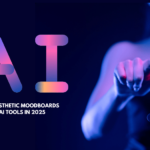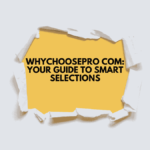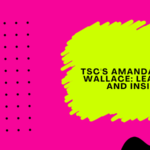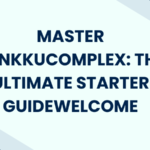In the fast-evolving world of digital design, Aesthetic Moodboards with AI Tools have become essential tools for creative professionals. Whether you’re a designer, marketer, content creator, or brand strategist, moodboards help you define and visualize the vibe of your ideas before execution. Now, in 2025, artificial intelligence has made the process faster, smarter, and more intuitive than ever before.
This comprehensive guide explores how to design aesthetic moodboards using AI tools in 2025. You’ll learn about the best platforms, trends, techniques, and how to take your visual storytelling to the next level — all with the power of artificial intelligence.
You can check out more insightful articles and the latest trends in the market by visiting Thee-vital-mag-net.blog
What Is a Moodboard and Why It Matters in 2025
A moodboard is a visual collage of images, colors, textures, fonts, and elements that reflect a particular theme, tone, or design concept. Traditionally crafted manually using magazines, sketches, or digital tools like Adobe Photoshop, moodboards have now embraced the efficiency of AI.
In 2025, the relevance of moodboards has grown. Brands are prioritizing user experience, consistent aesthetics, and emotional resonance. Whether for a website redesign, product launch, social media campaign, or personal branding — a well-crafted moodboard acts as your north star.
Why Use AI for Moodboard Creation?
AI brings automation, smart recommendations, and speed to the moodboard creation process. Instead of spending hours browsing for visual assets or experimenting with color palettes, AI tools can:
- Auto-generate themes based on keywords or prompts
- Analyze aesthetics and suggest complementary visuals
- Enhance productivity by reducing manual design work
- Ensure consistency with brand guidelines and color harmony
- Personalize recommendations based on previous projects
This saves time while unleashing creativity at scale, especially for freelancers, agencies, and businesses that need to turn around design ideas quickly.
Top AI Tools for Designing Moodboards in 2025
Let’s dive into the most powerful AI tools you can use to create aesthetic moodboards in 2025:
1. Canva AI Moodboard Generator
Canva now includes an AI moodboard assistant that auto-generates visuals based on your project description. You can enter a keyword like “boho minimalism” or “techy futurism,” and it fetches images, fonts, and colors aligned with the vibe.
Features:
- Natural language prompts
- Drag-and-drop editing
- Brand Kit integration
- AI layout suggestions
2. Milanote
A favorite among designers and creatives, Milanote supports AI-assisted organization. It helps you sort your assets and makes suggestions for grouping and spacing.
Features:
- Smart image clustering
- Color palette extraction
- Visual collaboration tools
3. Adobe Firefly + Express
Adobe’s AI, Firefly, integrates seamlessly with Adobe Express, allowing you to describe visuals and instantly generate aesthetic content that fits your board.
Features:
- Text-to-image generation
- Smart auto-layouts
- Style-based suggestions
4. Moodboard AI
A niche tool focused solely on moodboards. Just describe your project, and the tool assembles a themed board using images from high-quality sources.
Features:
- AI image sourcing
- Vibe classification (e.g., cozy, vibrant, futuristic)
- Real-time editing
5. Fotor AI Design Studio
Known for its AI-powered photo enhancements, Fotor now includes moodboard creation with stylistic tagging.
Features:
- Design presets
- AI-based image editing
- Mood tagging system
Step-by-Step Guide: Creating an Aesthetic Moodboard with AI in 2025
Let’s walk through the full process of building an aesthetic moodboard using AI tools.
Step 1: Define Your Mood and Intent
Before you start designing, decide what vibe or message you want to convey. Is it calm and minimalist, bold and rebellious, vintage and rustic, or sleek and modern?
Use AI tools that allow prompt-based input (like “Create a warm and earthy moodboard for a wellness brand”).
Step 2: Choose Your AI Tool
Select a platform that aligns with your style and needs. Canva AI is great for social media visuals, while Adobe Firefly works well for intricate designs.
Consider:
- Ease of use
- Integration with other platforms
- Export options
- Collaboration features
Step 3: Input Prompts or Keywords
Most AI moodboard tools in 2025 support prompt-based design. Use descriptive keywords like:
- “Dark academia vibes with muted tones”
- “Energetic sports branding in neon hues”
- “Retro tech with glitch effects and chrome”
AI will generate image clusters, fonts, colors, and even background textures based on your prompt.
Step 4: Curate and Refine
AI will generate a draft moodboard, but your human touch is still essential. Review and curate:
- Replace or tweak images
- Adjust spacing and layout
- Refine fonts and text
- Reorder elements based on hierarchy
Step 5: Add Brand Elements (If Applicable)
Use the tool’s Brand Kit feature (Canva, Adobe, Fotor) to import your brand’s color palette, logo, and typography to maintain consistency.
Step 6: Export and Share
Most platforms allow you to export in PNG, PDF, or shareable URLs. Share with team members or clients for feedback before finalizing.
Design Trends for Aesthetic Moodboards with AI Tools in 2025
When designing moodboards with AI, staying up-to-date with visual trends gives your work a modern edge. Here are a few aesthetic styles that dominate 2025:
- Neo-futurism: Chrome textures, glitch effects, and 3D holographics.
- Quiet luxury: Muted neutrals, organic textures, custom sticker and serif typography.
- Maximalism: Collages of bold colors, expressive fonts, and chaotic layering.
- Digital nostalgia: Early 2000s web aesthetics mixed with modern gradients.
- Eco-minimalism: Earth tones, natural patterns, and clean white space.
Your AI tool can help replicate these styles through style prompts or preset templates.
Common Mistakes to Avoid When Designing with AI
While AI tools simplify the process, here are some mistakes to steer clear of:
- Over-relying on automation – Always apply your judgment and creativity.
- Inconsistent visual direction – Stick to a single theme or aesthetic.
- Ignoring brand guidelines – Use your color palette and fonts consistently.
- Crowding the board – Use white space to enhance focus and readability.
- Skipping feedback – Share your board for review before finalizing.
Benefits of Using Aesthetic Moodboards with AI Tools Design
| Benefit | Description |
| Speed | Save hours of manual curation with instant AI suggestions. |
| Creativity Boost | Discover new styles and ideas through AI inspiration. |
| Accessibility | No design background required; AI handles layout and visuals. |
| Collaboration | Share and edit boards with teams in real time. |
| Consistency | AI ensures aesthetic balance and brand cohesion. |
Real-Life Use Cases of AI Moodboards in 2025
- Marketing Teams: Creating campaign visuals that align with seasonal trends.
- Fashion Designers: Visualizing fabric, textures, and outfit inspirations.
- Web Developers: Sharing design direction before UI/UX development.
- Interior Designers: Curating vibe boards for home renovation projects.
- Social Media Managers: Planning content themes for Instagram or TikTok.
FAQs
1. What is the best Aesthetic Moodboards with AI Tools creation in 2025?
Canva AI, Adobe Firefly, and Moodboard AI are among the top tools for their balance of creativity, functionality, and user-friendly interfaces.
2. Can I create moodboards with AI for free?
Yes, many tools like Canva and Milanote offer free plans with basic features. However, advanced features and high-res exports may require a subscription.
3. Are AI moodboards suitable for professional use?
Absolutely. AI-generated moodboards are widely used by creative agencies, freelancers, and marketing teams for concept pitching and campaign planning.
4. Can AI understand my personal aesthetic style?
Many tools use machine learning to adapt to your preferences over time, especially if you frequently use the same platform or input similar prompts.
5. How accurate is AI in matching design vibes?
Modern AI tools are trained on large visual datasets and can match aesthetics with surprising accuracy, especially when given descriptive prompts.
Conclusion
AI has revolutionized the way we approach moodboard design in 2025. By blending creativity with machine intelligence, designers and non-designers alike can bring their ideas to life faster and more beautifully than ever before.
Whether you’re building a brand, launching a campaign, or just expressing a vision, AI moodboard tools give you the power to organize and visualize aesthetic ideas with precision. As the tools continue to evolve, so will your ability to dream, design, and deliver — all powered by the synergy between art and artificial intelligence.










